= Parodia mairanana Cárdenas
Natl. Cact. Succ. J. 12(4): 84 (-85; fig.). 1957
Accepted Scientific Name: Parodia comarapana Cárdenas
Revista Agric. (Cochabamba) 7(6): 24 (fig.). 1951
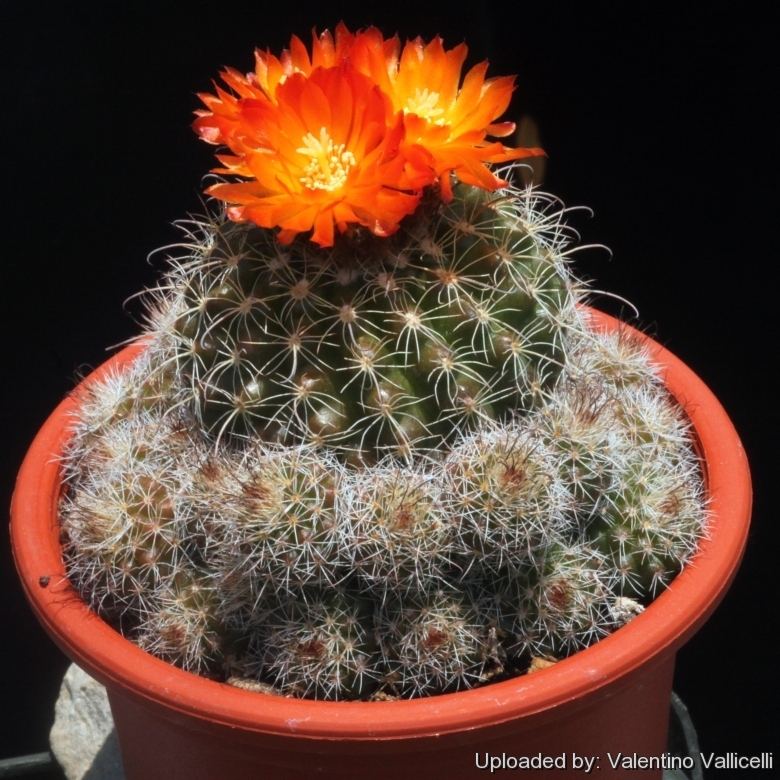
Bolivicactus mairananus (Parodia mairanana) Photo by: Valentino Vallicelli
Origin and Habitat: Bolivia-Santa Cruz, Comarapa, department of Mairanana (extent of occurrence =1,600 km2).
Altitude: About 1500-2300 m over sea level.
Type locality: Above Agua Clara in the neighbourhood of Mairana.
Habitat and Ecology: This species grows in humid rocky outcrops in grassland and inter-Andean valleys. The major threats is habitat destruction through subsistence farming and agriculture. Parodia mairananaSN|5775]]SN|5775]] grows mostly in dense populations with many individuals.
Synonyms:
See all synonyms of Parodia comarapana
back
Accepted name in llifle Database:Parodia comarapana CárdenasRevista Agric. (Cochabamba) 7(6): 24 (fig.). 1951Synonymy: 7
back
Common Names include:
ENGLISH: Red Tom Thumb
RUSSIAN (Русский): Пародия майранская
Description: Parodia mairananaSN|5775]]SN|5775]] is a small free-flowering cactus, with many apical flowers mostly orange tinged with red or rusty-red, but plants with different flowers colours are often found in cultivation.
Remarks: Parodia mairananaSN|5771]]SN|5775]] is considered currently a synonym of Parodia comarapanaSN|5771]]SN|5771]] and is assessed together. However some authors suggest to separate them as two different species. Parodia comarapanaSN|5775]]SN|5771]], as most Parodias, is quite variable and has received numerous names of controversial botanical value: Parodia mairananaSN|5775]]SN|5775]] is one of them.
Habit: It is a small usually solitary or slowly offsetting around its base. In cultivation it is often found a very free branching form that readily fulfils a large bowl with dozen of heads in a few years.
Stem: Small, greyish-green to dull green, attaining about 8 cm in diameter and 4,5 cm in height.
Ribs: About 15 -16 (or more), forming small tubercles.
Areoles: Young areoles are relatively large, and filled with abundant white wool. Later they are naked.
Radial spines: 9-15 or so, thin, whitish grey or yellow with a brownish tip, more or less curved (which is a useful recognition factor)
Central spines: 3 or 4, very similar to the radials. One of the centrals appears longer than all others, and and may occasionally be more or less hooked.
Flowers: Small, funnel-shaped, apical, mostly orange tinged with red or rusty-red (but ranging in color from yellow through pink to scarlet) 2-3.5 cm wide. Dried flowers remain for a long time on the plant body after blooming.
Blooming season: Spring to summer, but with favorable conditions this one blooms almost all year, just taking "catnaps" in-between.
Fruit: Red or green, with white hairs.
Subspecies, varieties, forms and cultivars of plants belonging to the Parodia comarapana group
- Parodia comarapana Cárdenas: flowers mostly orange tinged with red or rusty-red, but also yellow or pink. Distribution: Santa Cruz and Florida in the north of Comarapa, Bolivia.
 Parodia mairanana Cárdenas: has flowers in various combinations of orange,brick red and dull vermilion. Distribution: Above Agua Clara in the neighbourhood of Mairana.
Parodia mairanana Cárdenas: has flowers in various combinations of orange,brick red and dull vermilion. Distribution: Above Agua Clara in the neighbourhood of Mairana.  Parodia mairanana var. atra Backeb.: has dark green body with dark spines, almost black in young areoles. The pericarpel is covered in dark-red hairs. Distribution: Mairana, Florida, Santa Cruz, Bolivia
Parodia mairanana var. atra Backeb.: has dark green body with dark spines, almost black in young areoles. The pericarpel is covered in dark-red hairs. Distribution: Mairana, Florida, Santa Cruz, Bolivia - Parodia neglecta F.H.Brandt
- Parodia neglectoides F.H.Brandt
Bibliography: Major references and further lectures
1) Edward Anderson “The Cactus family” Timber Press, Incorporated, 2001
2) James Cullen, Sabina G. Knees, H. Suzanne Cubey "The European Garden Flora Flowering Plants: A Manual for the Identification of Plants Cultivated in Europe, Both Out-of-Doors and Under Glass" Cambridge University Press, 11/Aug/2011
3) David R Hunt; Nigel P Taylor; Graham Charles; International Cactaceae Systematics Group. "The New Cactus Lexicon" dh books, 2006
4) Lowry, M. 2013. Parodia comarapana. In: IUCN 2013. "IUCN Red List of Threatened Species." Version 2013.2. <www.iucnredlist.org>. Downloaded on 01 January 2014
 Bolivicactus mairananus (Parodia mairanana) Photo by: Diego Armentano
Bolivicactus mairananus (Parodia mairanana) Photo by: Diego Armentano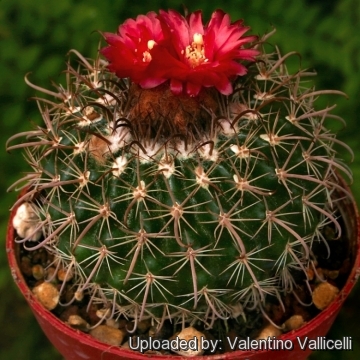 - This plant - nowadays considered none other than a synonim of Parodia comarapana - is distinguishable for the flowers that are rusty-red to bright red. (Parodia mairanana) Photo by: Valentino Vallicelli
- This plant - nowadays considered none other than a synonim of Parodia comarapana - is distinguishable for the flowers that are rusty-red to bright red. (Parodia mairanana) Photo by: Valentino Vallicelli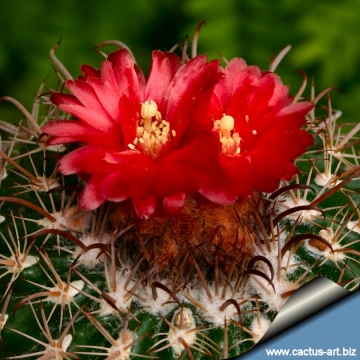 Bolivicactus mairananus (Parodia mairanana) Photo by: Cactus Art
Bolivicactus mairananus (Parodia mairanana) Photo by: Cactus Art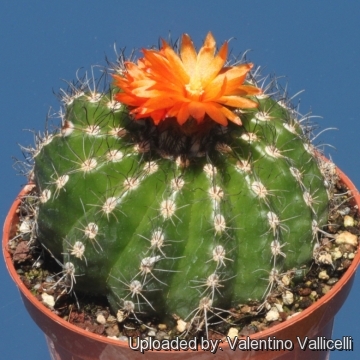 Bolivicactus mairananus (Parodia mairanana) Photo by: Valentino Vallicelli
Bolivicactus mairananus (Parodia mairanana) Photo by: Valentino Vallicelli Bolivicactus mairananus (Parodia mairanana) Photo by: Valentino Vallicelli
Bolivicactus mairananus (Parodia mairanana) Photo by: Valentino Vallicelli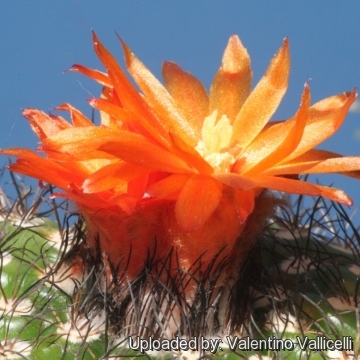 Bolivicactus mairananus (Parodia mairanana) Photo by: Valentino Vallicelli
Bolivicactus mairananus (Parodia mairanana) Photo by: Valentino Vallicelli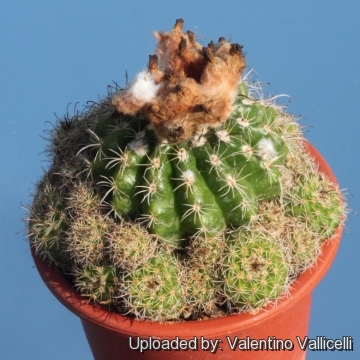 Bolivicactus mairananus (Parodia mairanana) Photo by: Valentino Vallicelli
Bolivicactus mairananus (Parodia mairanana) Photo by: Valentino VallicelliSend a photo of this plant.The gallery now contains thousands of pictures, however it is possible to do even more. We are, of course, seeking photos of species not yet shown in the gallery but not only that, we are also looking for better pictures than those already present.
Read More... Cultivation and Propagation: Water these plants regularly, and fertilize with a low nitrogen fertilizer every 6 to 8 weeks, from mid-spring to late summer. This plant should remain rather dry at other times (especially in winter), except for a quick, periodic misting on warmer days in late winter. If it is kept absolutely dry for a long period, it tends to lose its roots in winter. It can tolerate light frost (- 4C°), but rots easily if wet and cold.
If the local climate is warm enough to grow this plant outside, be sure that soil is well drained and sun if full, but with protection from strong midday rays.
Propagation: By Seeds that are very fine. Patience is required when growing various Parodia species from their small, slowly germinating seeds, some of which take as many as two years to germinate.

















